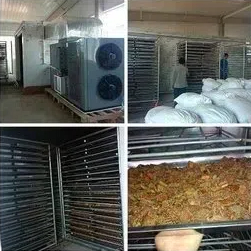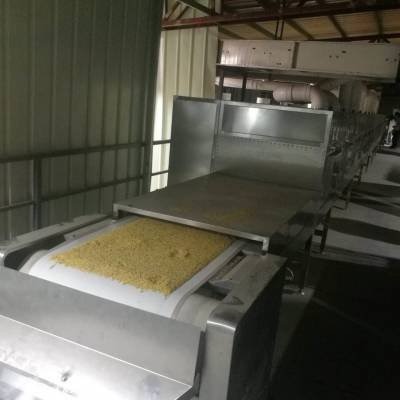
Content Menu
● Understanding Heat Pump Dryers
● Benefits of Heat Pump Dryers for Food Drying
>> Energy Efficiency
>> Gentle Drying Process
>> Versatility
>> Consistent Results
>> Reduced Moisture Content
>> Environmentally Friendly
● How Heat Pump Dryers Work
● Applications in Food Processing
>> Fruit and Vegetable Drying
>> Herb Drying
>> Meat Drying
>> Snack Production
● Cost Considerations
>> Initial Investment vs. Long-Term Savings
>> Financing Options
● Conclusion
● Frequently Asked Questions
>> 1. What is the main advantage of using a heat pump dryer for food?
>> 2. Can heat pump dryers handle all types of food?
>> 3. How does the drying process differ from traditional methods?
>> 4. Are heat pump dryers environmentally friendly?
>> 5. What should I consider before investing in a heat pump dryer?
In recent years, the demand for energy-efficient appliances has surged, and one of the standout options in the drying appliance market is the heat pump dryer. While these dryers are often discussed in the context of laundry, their technology and benefits can also be applied to food drying, making them an excellent choice for food manufacturers and processors. This article will explore the advantages of heat pump dryers, particularly in the context of food drying, and help you determine if investing in one is worthwhile for your business.

Understanding Heat Pump Dryers
Heat pump dryers operate on a different principle than traditional dryers. Instead of generating heat directly, they use a refrigeration cycle to extract moisture from the air and recycle that heat to dry the items inside. This process is not only energy-efficient but also gentle on the products being dried, making it ideal for food applications.
Benefits of Heat Pump Dryers for Food Drying
Energy Efficiency
One of the most significant advantages of heat pump dryers is their energy efficiency. They consume less electricity compared to conventional dryers, which can lead to substantial cost savings over time. For food manufacturers, this means lower operational costs and a reduced carbon footprint. The energy savings can be particularly pronounced in large-scale operations where drying is a continuous process.
Gentle Drying Process
The low-temperature drying process of heat pump dryers is particularly beneficial for food products. It helps preserve the nutritional value, flavor, and color of the food, which is crucial for maintaining quality in food production. Unlike traditional dryers that can scorch or over-dry products, heat pump dryers ensure that the food retains its natural characteristics.
Versatility
Heat pump dryers can handle a wide variety of food products, from fruits and vegetables to meats and herbs. This versatility makes them an excellent investment for businesses looking to diversify their product offerings. For instance, a single heat pump dryer can be used to dry apples, herbs, and even fish, making it a multifunctional tool in the food processing industry.

Consistent Results
These dryers provide uniform drying, ensuring that all products are dried evenly. This consistency is vital for food safety and quality, as uneven drying can lead to spoilage or contamination. With heat pump dryers, manufacturers can achieve a consistent moisture content across batches, which is essential for product standardization.
Reduced Moisture Content
Heat pump dryers can achieve lower moisture levels than traditional drying methods, which is essential for extending the shelf life of food products. This capability is particularly important for businesses that require long-term storage of dried goods. By reducing moisture content effectively, heat pump dryers help prevent microbial growth and spoilage.
Environmentally Friendly
By using less energy and producing less waste heat, heat pump dryers are a more sustainable option for food drying. This aligns with the growing consumer demand for environmentally friendly products. Many businesses are now prioritizing sustainability in their operations, and investing in energy-efficient equipment like heat pump dryers can enhance their green credentials.
How Heat Pump Dryers Work
Heat pump dryers utilize a closed-loop system that involves several key components: the evaporator, compressor, condenser, and expansion valve.
1. Evaporator: The process begins in the evaporator, where moisture from the food is absorbed into the refrigerant. This causes the refrigerant to evaporate, absorbing heat from the food in the process.
2. Compressor: The gaseous refrigerant is then compressed, raising its temperature and pressure.
3. Condenser: The hot, high-pressure refrigerant moves to the condenser, where it releases heat to the air, causing it to condense back into a liquid.
4. Expansion Valve: Finally, the refrigerant passes through the expansion valve, where its pressure drops, and the cycle begins again.
Applications in Food Processing
Heat pump dryers are increasingly being adopted in various food processing applications, including:
Fruit and Vegetable Drying
Ideal for producing dried fruits and vegetables, heat pump dryers help retain the natural flavors and nutrients. For example, when drying apples, the gentle heat prevents browning and maintains the crisp texture that consumers expect.
Herb Drying
The gentle drying process is perfect for herbs, preserving their essential oils and aromas. This is particularly important for businesses that sell dried herbs for culinary or medicinal purposes, as the quality of the final product can significantly impact customer satisfaction.
Meat Drying
For businesses involved in jerky production, heat pump dryers can effectively remove moisture while maintaining the meat's quality. The controlled environment of a heat pump dryer helps prevent the growth of harmful bacteria, ensuring that the final product is safe for consumption.
Snack Production
Companies producing healthy snacks can benefit from the energy efficiency and quality preservation offered by heat pump dryers. For instance, kale chips and other vegetable snacks can be dried without losing their nutritional value, appealing to health-conscious consumers.
Cost Considerations
While the initial investment in a heat pump dryer may be higher than that of traditional dryers, the long-term savings on energy costs and the potential for higher-quality products can make it a worthwhile investment. Businesses should consider their production volume, energy costs, and product quality requirements when evaluating the cost-effectiveness of heat pump dryers.
Initial Investment vs. Long-Term Savings
The upfront cost of heat pump dryers can be a barrier for some businesses. However, it is essential to consider the long-term savings on energy bills. Many manufacturers report a return on investment within a few years due to reduced energy consumption. Additionally, the durability and reliability of heat pump dryers can lead to lower maintenance costs over time.
Financing Options
For businesses concerned about the initial investment, various financing options are available. Many equipment suppliers offer leasing programs or financing plans that can help spread the cost over time. This can make it easier for businesses to adopt this technology without a significant upfront financial burden.
Conclusion
In conclusion, heat pump dryers represent a significant advancement in food drying technology. Their energy efficiency, gentle drying process, and versatility make them an excellent choice for food manufacturers looking to improve their operations. While the initial investment may be higher, the long-term benefits in terms of cost savings and product quality can make heat pump dryers a valuable addition to any food processing facility.

Frequently Asked Questions
1. What is the main advantage of using a heat pump dryer for food?
The main advantage is energy efficiency, which leads to lower operational costs and better preservation of food quality.
2. Can heat pump dryers handle all types of food?
Yes, they are versatile and can dry a wide range of food products, including fruits, vegetables, herbs, and meats.
3. How does the drying process differ from traditional methods?
Heat pump dryers use a low-temperature drying process, which is gentler on food and helps retain nutrients and flavors.
4. Are heat pump dryers environmentally friendly?
Yes, they consume less energy and produce less waste heat, making them a more sustainable option for food drying.
5. What should I consider before investing in a heat pump dryer?
Consider your production volume, energy costs, and the quality requirements of your food products.












